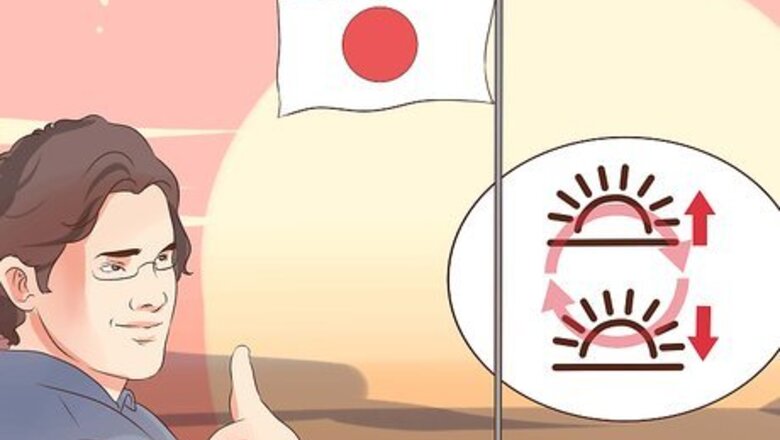
views
Displaying a National Flag
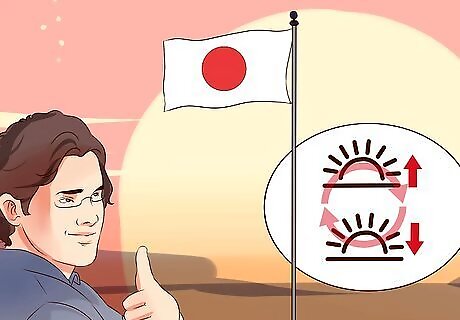
Fly the flag from sunrise to sunset. Buildings and outdoor flag staffs should be flown from sunrise to sunset. If a national flag is flown at night, it should be brightly illuminated with proper lighting, such as that of a spotlight. National flags should not be flown in bad weather, such as heavy rain or thunderstorms, unless the flag is an all-weather flag. Some nations require that during a brief period of precipitation, the flag be lowered until the weather clears.

Display a national flag in a position superior to all other flags. The national flag should fly higher than other flags present. This includes state and provincial flags. The exception to this is when flags of other countries are also displayed, such as at the United Nations or during the Olympic Games. If multiple flags are flown on the same staff, the national flag is to be flown above the others, at the top of the staff.
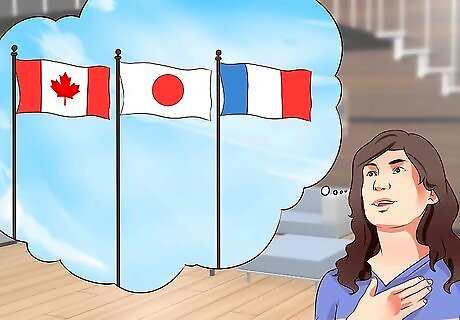
Display the flags of multiple nations as equals. When flags of multiple countries are flown in the same place, they must all be displayed as equals. They should each be flown on individual flagpoles, each of the same size. All of the flags must be the same size and no flag can be bigger or smaller than another flag. National flags of multiple countries should be arranged in alphabetical order.
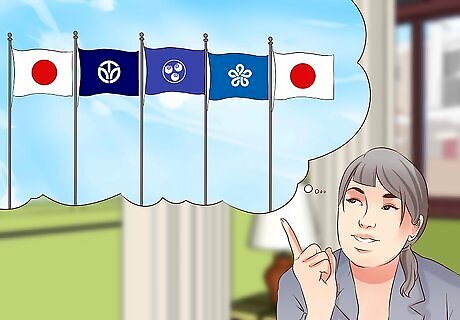
Display multiple flags in the correct order. When displaying flags in a line, the position of the national flag in relation to other (non-national) flags changes based on the number of flags present. These range from two flags, to five or more. When two flags are displayed in a line, the national flag should appear on the left side when viewed by an observer. When three flags are displayed in a line the national flag should be in the middle (or the second flag). When four flags are displayed in a line, the national flag should be the first flag on the left when viewed by an observer. When five or more flags are displayed in a line, two national flags should appear at both ends of the line. In other words, in a line of five flags, the national flag should appear as the first flag and the fifth flag.
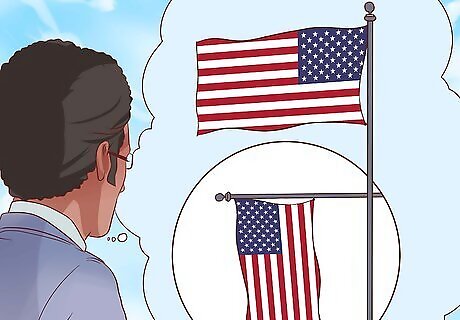
Hang national flags correctly. When displayed horizontally or vertically, the flag should be hung correctly, in accordance to the nation’s wishes. In the case of the US flag, this means the union (the blue field of stars) should be displayed uppermost and to the flag’s own right. This will be to the observer’s left. Note that some nations restrict their flag from being hung in this fashion, or have specific instructions for doing so.
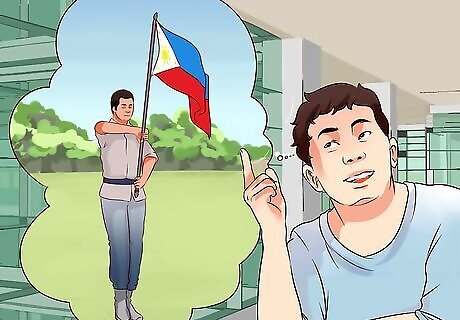
Display the flag correctly when parading. When carried in a parade, the national flag should be carried on the marching right. If there is a center of flags in a line, the flag should be carried in the center of that line. The flag must hang freely. If the flag is displayed on a float, it must be hanging from a staff. The flag is not to be draped over any portion of a vehicle. Flags featured on a float must otherwise follow standard flag procedure when displayed with other flags.
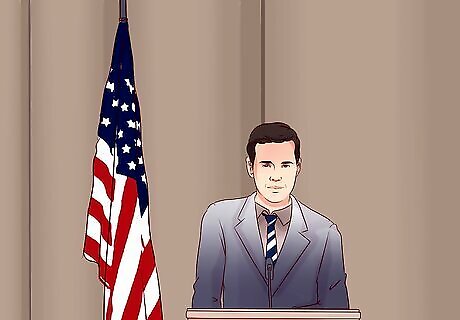
Display a national flag with prominence at a lectern. Events with public speakers, such as those that occur at a podium, should hang freely from a pole, superior to other flags present. The flag should be located to the speaker's right side, as a sign of honor and respect. For those observing the speaker, this will be on the speaker's left.
Raising and Lowering National Flags
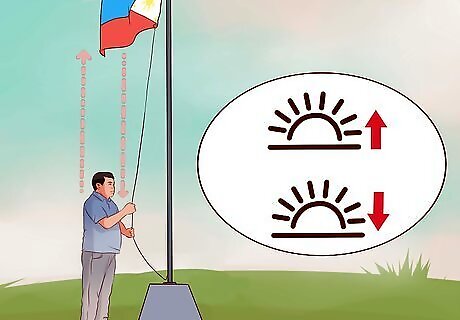
Hoist the flag briskly, lower the flag slowly. National flags should be raised in a brisk fashion. When lowered, they should be done so slowly and ceremoniously. The flag should be raised at sunrise, and lowered at sunset. Make sure to follow handling etiquette when attaching the flag to the staff. Do not let it drag or touch the floor.
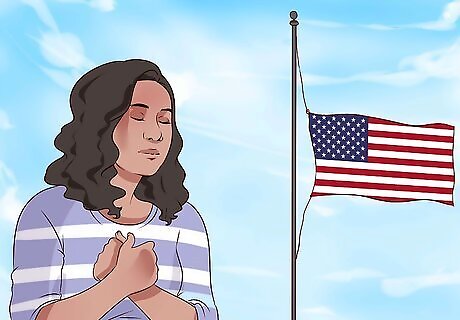
Raise the flag half-mast for holidays and mourning. Raise the flag as though normal, but once you have reached the peak of the staff, slowly lower the flag to half-mast. When lowering the flag for the evening, first raise the flag to the top of the staff before slowly lowering the flag. Each nation has specific days for flying the flag at half-mast. In the United States, those days are Peace Officers Memorial Day, Memorial Day, Patriot Day, Korean War Veterans Armistice Day, National Firefighters Memorial Day, and Pearl Harbor Remembrance Day. Some holidays only require a flag be flown half-mast for part of the day. On Memorial Day for example, the US flag is flown half-mast from sunrise to noon.
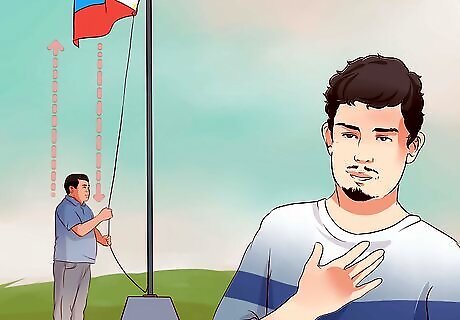
Salute the flag when raised and lowered. People in attendance for the raising and lowering of flags should salute the flag. The salute should be held until the flag has reached the top of the staff, or has been lowered and removed. If music is accompanying the raising or lowering of the flag, the salute should be held until the music has finished. Individuals present in military uniform should perform the military salute. Individuals present who are members of the armed forces or veterans may also perform the military salute. Those in attendance who are not in uniform should remove their headwear and place their right hand over their heart.The headwear may be held in the right hand, allowing the headwear to rest on the shoulder, while the hand is over the heart. Individuals from other countries should stand at attention, though are not required to salute.
Respecting the Flag
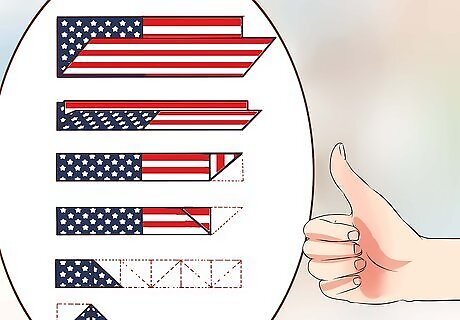
Fold and store the flag appropriately. The flag should be folded in accordance to national tradition. It should not be crumpled or folded in such a way that results in creases or wrinkles. Store the flag in a spot where it will not come into contact with anything that can soil it. Some flags have different folding techniques for certain occasions. The US flag for example requires a triangle fold when used at a burial.
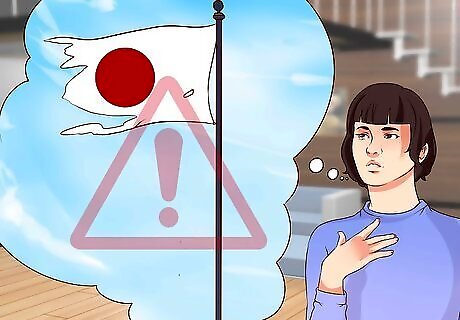
Dispose of a worn flag appropriately. When a flag is no longer in good condition, such as if it is torn, ripped, or badly soiled, it should no longer be raised or displayed. It should be disposed of in a dignified way as required by the nation in particular. If the flag is currently being flown, it should be removed and folded in standard respectful fashion. The standard disposal technique for flag disposal in the US is a respectful burning. Some organizations, such as the American Legion, will take old, worn flags and dispose of them appropriately.

Do not use a national flag as a textile. A flag should not be used to create apparel, bedding or drapery. Flags must be allowed to fall free, and not be drawn or sewn in ways that restrict this. The flag should not be used as a covering for the ceiling. This includes using the flag as a makeshift bag or purse!
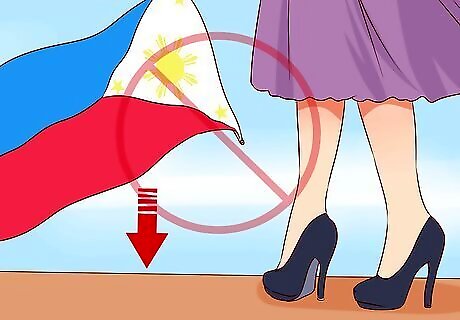
Do not allow the flag to touch anything beneath it. Most are familiar with not allowing flags to touch the ground. However, a flag should not teach anything that is beneath it. This includes the floor, water, parts of a balcony, or even merchandise. Desecration of a flag is punishable in some nations. In the US, desecrating the flag can lead to a fine or no more than one year imprisonment.
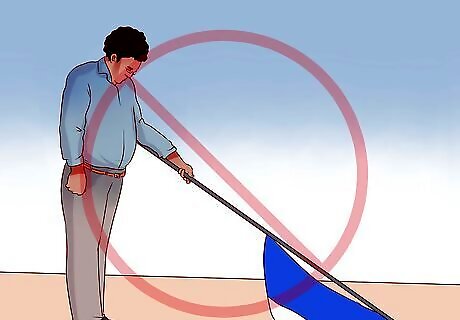
Do not dip the flag. Some nations requires individuals who carry a flag to not “dip” it, or turn it from an upright position to a horizontal position. This indicates deference to those present. Some nations practice this for national events, such as the Olympics, and others do not.
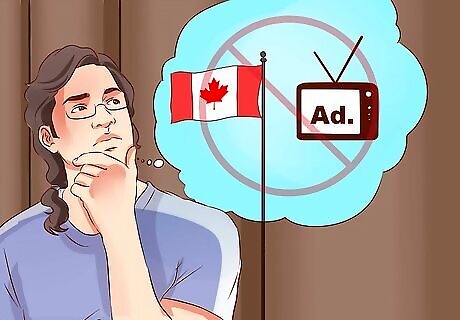
Do not use the flag for advertising. The flag cannot be made a part of any sort of advertising, such as being embroidered on pillows or napkins. Staffs that are flying the flag may not also fly advertisements for a product or company. It should go without saying that a flag may not be altered to feature text or other imagery.


















Comments
0 comment